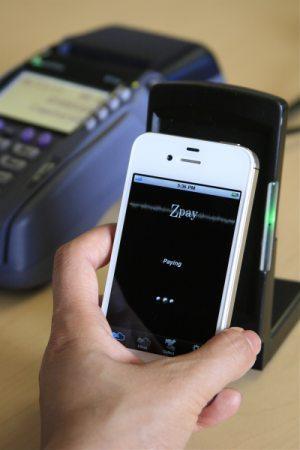
The idea of quick mobile payment options are nothing new. NFC has been in use in other countries for some time and is now beginning to gain a lot of traction on an international level. Swipe your phone over a POS-connected NFC tag and ... presto! Transaction complete. Even though mobile payment options are growing in popularity, their adoption has been relatively slow.
Thus far, Near Field Communication has shown the most promise and brings quite a few advantages over the standard methods for transferring data, but it has one major pitfall: hardware requirements. In order for a device to take advantage of the relatively effortless and quick data transfers between devices, both ends need to be equipped with a NFC transmitter and/or receiver. The bigger problem is that mobile phones, unlike home PCs, laptops and cash registers, are not meant to be hardware upgradeable. Once a phone launches without NFC, the hopes of that phone being used for NFC payments are slim to none.
From the time that NFC began to gain the attention of mobile manufacturers and consumers alike, other companies have come about to exploit the drawbacks to the hardware requirements of NFC. Although it isn't quite in direct competition with NFC technology, Google owned Deep Shot (invented by MIT grad Tsung-Hsiang Chang) aims to use mobile phones' existing cameras to transfer data. Amnesia Razorfish's new Amnesia Connect could also pose a threat to NFC if it could operate on something other than a $10,000 Microsoft Surface table.
In light of all of this data transfer arms race, yet another company has entered the arena. Naratte's Zoosh technology is a software that utilizes your phone's speakers. The phone's speaker will emit ultrasonic sound waves that is then received by the second device. The rate at which data can transfer is much slower than that of Bluetooth or Wi-Fi. Don't plan on sharing pictures between your phone and your friend's to the tune of “Never Gonna Give You Up,” but for the purpose of processing payments, it is plenty fast.
The argument in Zoosh's favor is that it has no hardware requirements beyond what all phones – yes, even feature phones – are already equipped with. Instead of having to apply NFC generation by generation to mobile phones and entirely upgrade register hardware with NFC receivers, a register can be fitted with Zoosh mics and speakers for a mere dollar and every phone out there is already hardware-capable. A simple software update (or application install for smartphones) would make all phones Zoosh-ready.
Considering this tech is nothing more than a payment option that transmits and receives sound waves, coupons can be sent via MMS which is accessible by nearly every phone out there. Even better, the security of Zoosh is apparently a non-issue. These ultrasonic sound waves are emitted an extremely high frequency, thus they do not travel very far. For authentication purposes, the devices can detect proximity.
It appears to be a method that addresses the more important concerns of NFC and still carries all (or most) of its advantages. That said, Naratte has a mountain to climb. Major companies like RIM, HTC and Google have shown interest in NFC and several manufacturers have started outfitting phones with the tech.
Does Zoosh have what it takes to be a big contender in the mobile payment option space? Support for PayPal and no real hardware requirements could certainly sway people and companies in its direction. But slowing the push for NFC will be a feat, especially with all of the support from Google. Even so, using both Zoosh and NFC alongside one another isn't out of the question.